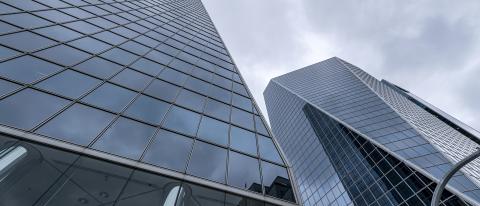Sometimes it is necessary for Boards to look beyond The Condominium Property Act, 1993 in order to determine the extent of its positive legal obligations. In this edition of Condo Talk we are going to talk about smoking in enclosed common areas.
Section 11 of The Tobacco Control Act prohibits any person from smoking in any enclosed public place, which includes the common elements of a multi-unit residential building. Including, but not limited to: elevators, parking garages, party rooms, exercise rooms, hallways, bike rooms, stairwells, crawl spaces, and entryways. The key element being the area is common property within the multi-unit residential building. This rule likely does not apply to townhome style developments, and certainly would not apply to single detached bare-land developments. For the most part, this rule seems straight-forward. However, it appears the smoking ban could also apply to any enclosed common property where an owner is granted exclusive use. The Tobacco Control Act does not seem to distinguish between common areas where everyone has access, and common areas where only some (or one) has access.
In addition to the prohibition on smoking, The Tobacco Control Act places positive obligations on proprietors to prevent unlawful smoking. “Proprietor” is defined to include “a person, who controls, governs or directs the activities carried on within the place or premises”, which means the Board of Directors of the Condominium Corporation is the proprietor of the common elements of a multi-unit residential building. Boards, therefore, are required to do the following:
- Ensure there are no ashtrays, matches, lighters or other things designed or used to facilitate smoking in the enclosed public spaces;
- Post no smoking signs at each entrance, in each public washroom, and in any waiting area; and
- Inform individuals smoking in the enclosed common areas that they are committing an offence and ask them to stop.
Signs posted must be at least 12.7 cm wide and 12.7 cm high. The international no-smoking symbol is the required method of communicating the prohibition. The symbol itself must be at least 9 cm in diameter. However, the Regulations do not appear to proscribe colour requirements for the symbol, meaning that a black and white, or colourized version are both likely acceptable.
Regardless of whether your Board is having issues with smokers, this is something that should be added to your next Board meeting agenda.
The views expressed herein are solely the author's and should not be attributed to the MG LLP or its clients. Any postings on legal issues are provided as a public service, and do not constitute solicitation or provision of legal advice. The author makes no claims, promises or guarantees about the accuracy, completeness, or adequacy of the information contained herein or linked to. Due to professional ethics, the author may not be able to comment on matters in which a client has an interest. Nothing herein should be used as a substitute for the advice of competent and informed counsel.
This web site/blog is presented for informational purposes only. These materials do not constitute legal advice and do not create a solicitor-client relationship between you and MG LLP. If you are seeking specific advice related to your situation, please contact MG LLP for a personal consultation.
Any unsolicited information sent to MG LLP through blogs or otherwise may not be protected by solicitor-client privilege.
MG LLP periodically provides materials on our services and developments in the law to interested persons. For permission to reprint articles or blogs, please contact marketing@mcdougallgauley.com.
This publication is protected by copyright.
© 2025 McDougall Gauley


